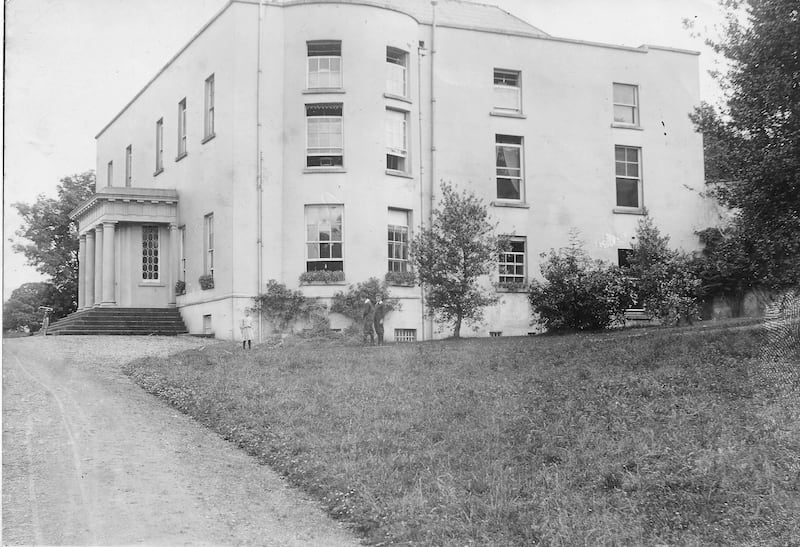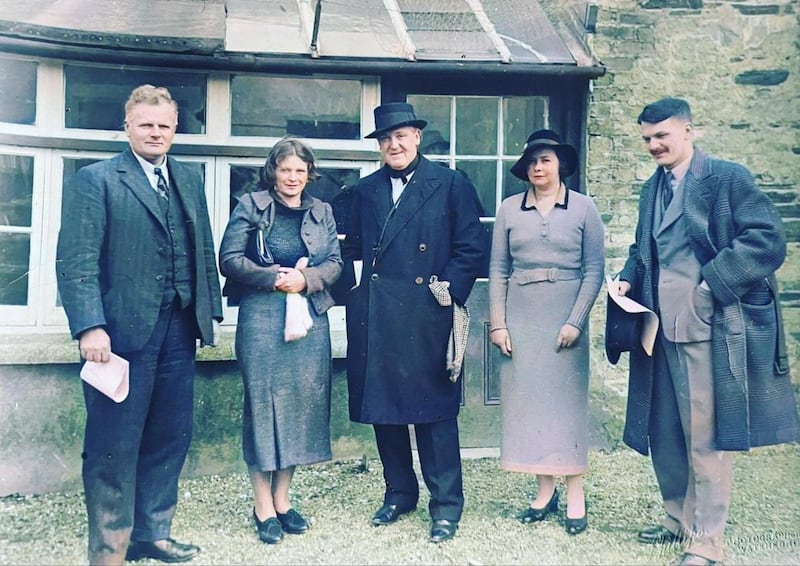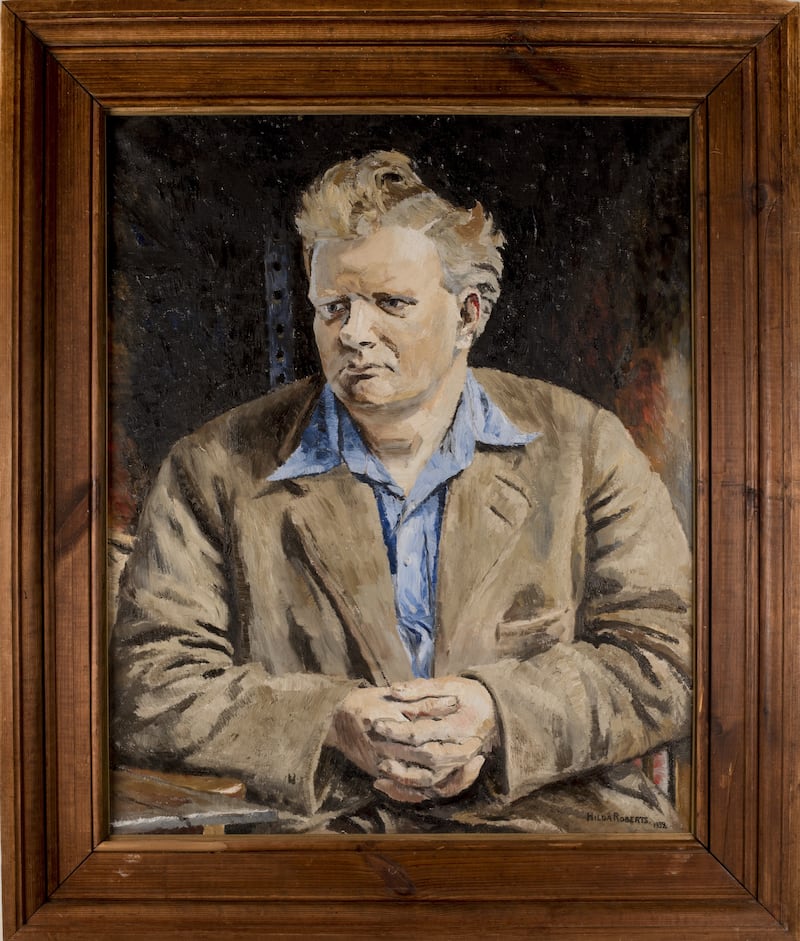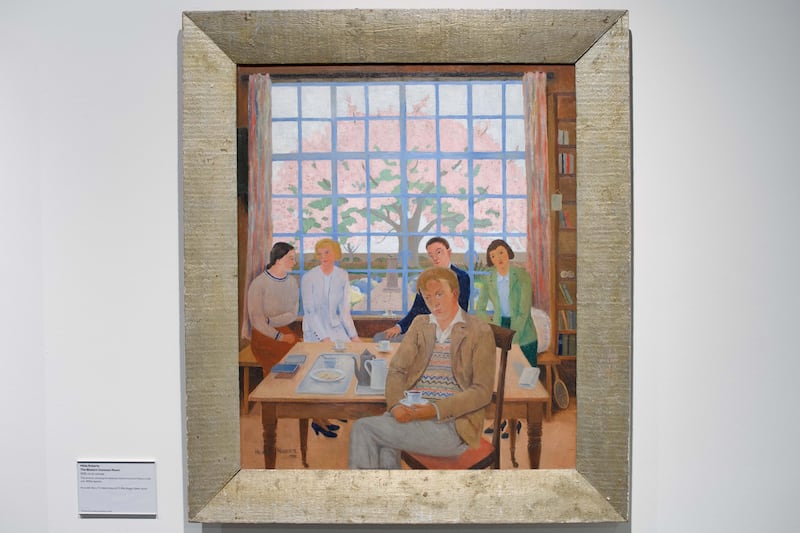It was a great pleasure and honour to be back in my native city, Waterford, at the celebration last month of two people who contributed so much to the city’s cultural life: Arnold Marsh and Hilda Roberts. Marsh’s autobiography, Memoirs of a Happy Belfastman, has now been beautifully produced by Lilliput Press with the help of Marsh and Roberts’s daughter, Eithne. Antony Farrell of Lilliput deserves every accolade for all he has done for Irish culture since founding Lilliput in 1984, as do the team who brought this memoir to fruition.
Old as I am, I am too young to have really known Marsh, but I feel I owe him a great deal. Before he left the headmastership of Newtown in 1939, he appointed my father Frederick Ernest Foster, rapidly immortalised as “Fef”, to Newtown, where he remained for the rest of his working life, retiring as vice-principal in 1980. My mother Betty Foster also taught there for a while under John Brigham’s headmastership.
The school (which celebrates its 225th anniversary this year) was the background to my and my sisters’ lives, from the kindergarten at Selborne through to sixth form and what lay beyond. We owe it much, for its liberal and imaginative approach to education and for some marvellous teachers. Newtown surrounded us with an inimitable ethos and atmosphere, and also brought the gift of several friends for life. None of which would have come our way without Marsh spotting my father’s talents all that time ago.

The school owes much else to that great talent-spotter too. A chapter in Maurice Wigham’s excellent history of Newtown is titled “Marsh’s School” and from 1925-1939 that is what it was. Marsh pulled the school back from the brink of closure in the early days of the Irish Free State, nurtured it, often at his own expense (and with the generosity of his friend Wilson Strangman), and kept close connections to it for the rest of his adventurous life – partly through his daughter Eithne. When Marsh was taking over in 1925 he wrote a letter to the Society of Friends which Maurice Wigham quotes in his book:
Wreckquiem review: Pat Shortt is well capable of an audience-pleasing expletive in an adroit performance
Netflix, Prime Video, Apple TV+, Paramount+: 10 of the best new shows to stream in July
Q&A: How are GP shortages affecting the country - and where are they hardest to find?
What will €325,000 buy in Kinsale and Co Kilkenny?
“You may [say] that it is antagonistic to the spirit of truth to bring up boy or girl in an environment of one set of ideas only but it is just here that Friends [Quakers] should be in an unassailable position. Almost all other people start off, or are expected to start off, with fixed creeds, and try to fit the minds of their children into various antique moulds, but Friends from the first have had no formal creed. They are and should remain seekers after truth, and as Light increases, their minds must open to let illumination in. A school that is imbued with honest Quakerism cannot twist or narrow the outlook of anybody but must broaden the minds of its scholars and will do this best by the quiet influences that arise from the way the school is carried on…”
Marsh showed an insatiable hunger for meeting people and finding out what made them tick
This was the approach which distinguished Newtown; I remember Gerald Simms, a history lecturer of mine at Trinity, saying that people from Newtown, whatever the standard of their academic work, “seemed to have done their growing up by the time they got to university”, which is – I think – an accolade. That would have been exactly Marsh’s objective. His approach is also indicated in the Book of Laws of Newtown School which he drew up in the 1930s; my favourite regulation is: “Members of staff are expected not to harbour venomous thoughts about those that trouble them, but to contemplate with benevolence and equanimity all such pupils as are most vexatious.” To which I’m tempted to add, “Yeah, right”. (I don’t think this approach was adopted by Billy Boggs, or Rex Webster, or Sam McClure, excellent teachers though they were.)
I should move on from Newtown, as in Marsh’s autobiography, his headship of the school comes up comparatively late in the story. The first 35 years of his life, before he became a teacher, cover an extraordinary record: his youth in Quaker Belfast at the turn of the 20th century, then a headlong dive into an experimental life of travel, involving jobs from goldminer in Ontario to film extra in Hollywood to a soldier in the American Expeditionary Force in the first World War.
All the time Marsh showed an insatiable hunger for meeting people and finding out what made them tick. This is recorded in the remarkably vivid letters home to his mother and sister Sylvia – the latter especially, as they give some idea of the influences which surrounded him at his English Quaker school and Queen’s University Belfast, and his omnivorous consumption of influential writers from Freud to HG Wells to Yeats. I imagine some of the ideas and speculations which tumble out in his letters to Sylvia would have shocked their mother, especially when he tries to dig into his childhood as part of his fling with Adlerian psychoanalysis. Whatever about this, he remains his own man throughout. And by the time he emerges as an educationalist (briefly at Midleton College, then Newtown, and later Drogheda Grammar), one can see what has made him the original and powerful figure he became.

So Newtown’s rescue and resurrection was very far from the end of Marsh’s story; the endnote to this book conjures up wonderfully the creative world he and his wife Hilda Roberts subsequently created at Woodtown Park in Rathfarnham, which echoes forward to this day. But they both left their mark on the school and the city, notably in the remarkable municipal art collection which they helped found. Roberts’s own powerful paintings show remarkable authority, range and veracity.
I’m reminded of Yeats’s poem The Municipal Gallery Revisited where he instructs his readers to look at the portraits in what is now the Hugh Lane Gallery, and trace Ireland’s history in their faces. Roberts’s vision allows us to do this. The president of the Royal Hibernian Academy, Dermod O’Brien, told her in 1932 that if she went off to Waterford and married a schoolmaster it would be the end of her as a painter. Her collection shows how wrong he was. But O’Brien, I think, was more keen on “networking” than painting, and his work looks insipid today, while Roberts’s still blazes away. Moreover, when she moved to Waterford, she was a moving spirit in creating the remarkable Waterford Art Collection – with local friends such as senator Edward McGuire, Patric Stevenson, Roland and Lisa Gallagher, Dorothea Jacob, Robert Burke, and Robert Doupe. These people started a series of exhibitions of Irish contemporary art, displayed in Newtown through the 1930s, climaxing with an exhibition opened by Jack Yeats – a rare public appearance for him, probably persuaded by his friend Liam Glynn, then teaching at Newtown. From this developed the collection which we value so much today.



All this indicates the creative world of the Irish revival in which Marsh and Roberts played a part; though Roberts’s studio at Selborne (once the Wyse family’s coach-house) had become Newtown’s preparatory school classroom by my day, she made wonderful works there and she is now recognised as one of our major portraitists. Her gift irradiates her portraits of her husband, of Wilson Strangman, and of Liam Glynn, all in the school’s collection. There is also a powerful charcoal drawing of the formidable William Burke, who looked after the school’s grounds and farm, and taught Marsh, upon his arrival at Newtown in 1925, about the school’s motley herd of cows. As Marsh tells it, Burke “knew [the cattle] individually. ‘That wan’s a mane baste,’ he would say, giving his character reports, ‘but this one now is an honourable animal’.”
My father Fef, who took a keen interest in the school herd and started Newtown’s Young Farmer’s Club, would have appreciated that insight. He would have loved much else about the Memoirs of a Happy Belfastman. As vivid as any of Roberts’s portraits, it profiles a true original, and a generous spirit who lived life to the full. The book and Roberts’s paintings reminds us of a life-affirming, open-minded, enterprising and tolerant side of Irish life and character, epitomised by Marsh and Roberts, which we are perhaps beginning to recognise and celebrate as we should.
Marsh’s old friend Bulmer Hobson, like him a broad-minded nationalist from a Quaker background, wondered in old age whether nowadays people had as much “fun” as they did in their radical youth. That sense of fun, rather than fundamentalism, shines through this book. Marsh used to begin addresses to evening meeting at the school with a warning: “Now you must not take what I say as true, just because I say it. Think it out for yourselves.” This book and those paintings record the achievements of two outstanding people who clearly always thought it out for themselves, and in the process left generations to come in their debt – a debt which Waterford is rightly acknowledging, and celebrating.
- Listen to our Inside Politics Podcast for the latest analysis and chat
- Sign up for push alerts and have the best news, analysis and comment delivered directly to your phone
- Find The Irish Times on WhatsApp and stay up to date

















